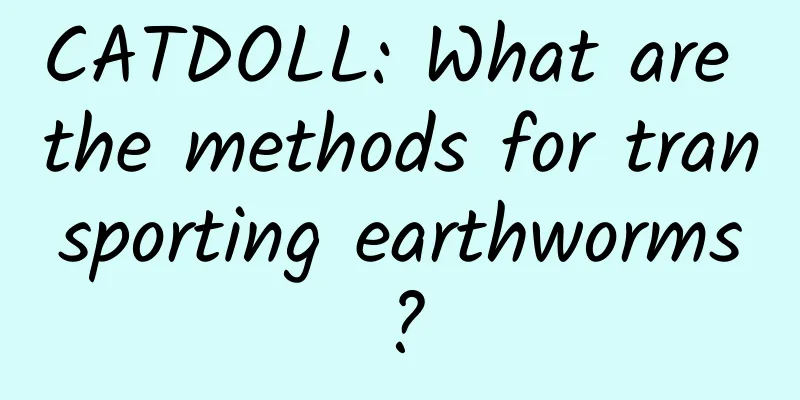CATDOLL : CATDOLL: What are the methods for transporting earthworms?

|
The safety factor for the transportation of breeding earthworms is high. For example, large and medium earthworms have high requirements for humidity and correspondingly large oxygen consumption, so the moisture content of the carrier in the box should also be high and the porosity should be large; while small and young earthworms are weak and have low physiological activity energy, so the requirements for carrier humidity and porosity are not as high as those for large and medium earthworms. When the transportation distance is long and the shipping volume is large, reasonable packaging and transportation must be carried out. There are several transportation methods. 1. For short-distance transportation, you can put moist feed or use the grass on the breeding bed as filler in the container, and then put the earthworms in. 2. For long-distance transportation, you can use mud and carbon as filler or use the grass on the breeding bed as filler, wrap it with gauze, put it in a container of appropriate size, and then put the earthworms in. 3. For parcel mailing, a small amount of earthworms can be put into an iron box or plastic tube, filled with moist grass, and sent through the post office. 4. The shipment of nest carriers is to select nest carriers for shipment according to the different grades of earthworms, large, medium and small, and the required ecological requirements. In this way, it is safe and reliable for long-distance transportation and long-term storage in batches. Even in the normal temperature season for several months, no death will occur after unpacking, and large earthworms will reproduce and grow normally. Preparation of earthworm carriers: For large and medium earthworm habitat carriers, add 3% bean cake powder and 5% flour to the bacterial cow dung, mix well, and add appropriate amount of rice washing water to knead repeatedly to make it sticky (water content is about 65%), and knead it into a round ball the size of a goose egg by hand, and roll it with a layer of wheat bran or broad-leaved branches stored for more than several years. For the carrier used as a habitat for young earthworms, add an appropriate amount of nutrient solution to the bacterial cow dung, mix well, and knead it repeatedly to make it into small mud-like lumps (2-3 cm in diameter) with a water content of about 40%. In addition, there must be gaps between the large and small carrier lumps, which have sufficient air content and strong ecological buffering effects such as oxygenation, anti-corruption bacteria, and ventilation. |
<<: CATDOLL:How many types of bees are there in the world?
>>: CATDOLL: Are grasshoppers beneficial insects?
Recommend
CATDOLL: What is the best way to feed red worms? (What is the best way to feed red worms?)
1. What is the best way to raise red worms? 1. Br...
CATDOLL: How much does it cost to raise crayfish on 10 acres?
What is the cost of raising crayfish on 10 acres?...
CATDOLL: Are you selling piranhas?
1. Are piranhas for sale? Freshwater white pomfre...
CATDOLL: What is the best way to feed fireflies?
1. How to breed black fireflies 1. Breeding equip...
CATDOLL: What should I do if earthworms have aphids?
1. What should I do if earthworms have aphids? 1 ...
CATDOLL: Top Ten Rare Groupers
The top ten precious groupers are ranked as follo...
Is it normal for cats to snore?
Cats snore when they sleep. Cats are thinking ani...
CATDOLL: What medicine is effective in killing snails?
1. Does highly effective chlorfenapyr kill snails...
CATDOLL: When is the best season for raising silkworms?
When is the best season for raising silkworms? Th...
CATDOLL: How much can you earn by selling sea cucumbers for 10,000
How much can you earn by selling sea cucumbers fo...
CATDOLL: How much is the profit of fly farming? (How much is the profit of fly farming? Zhihu)
1. What are the correct methods and precautions f...
CATDOLL: What soil is best for snail farming? (Video on What soil is best for snail farming?)
1. I want to know what conditions are needed for ...
CATDOLL: A guide to duck farm construction: a comprehensive strategy from planning to operation
1. Duck farm planning Before building a duck farm...
CATDOLL: Will pesticides kill loaches when they are raised in rice fields?
1. Will pesticides kill loaches when breeding the...
CATDOLL: How to raise mandarin fish? Mandarin fish breeding technology
How to raise mandarin fish? Mandarin fish breedin...









